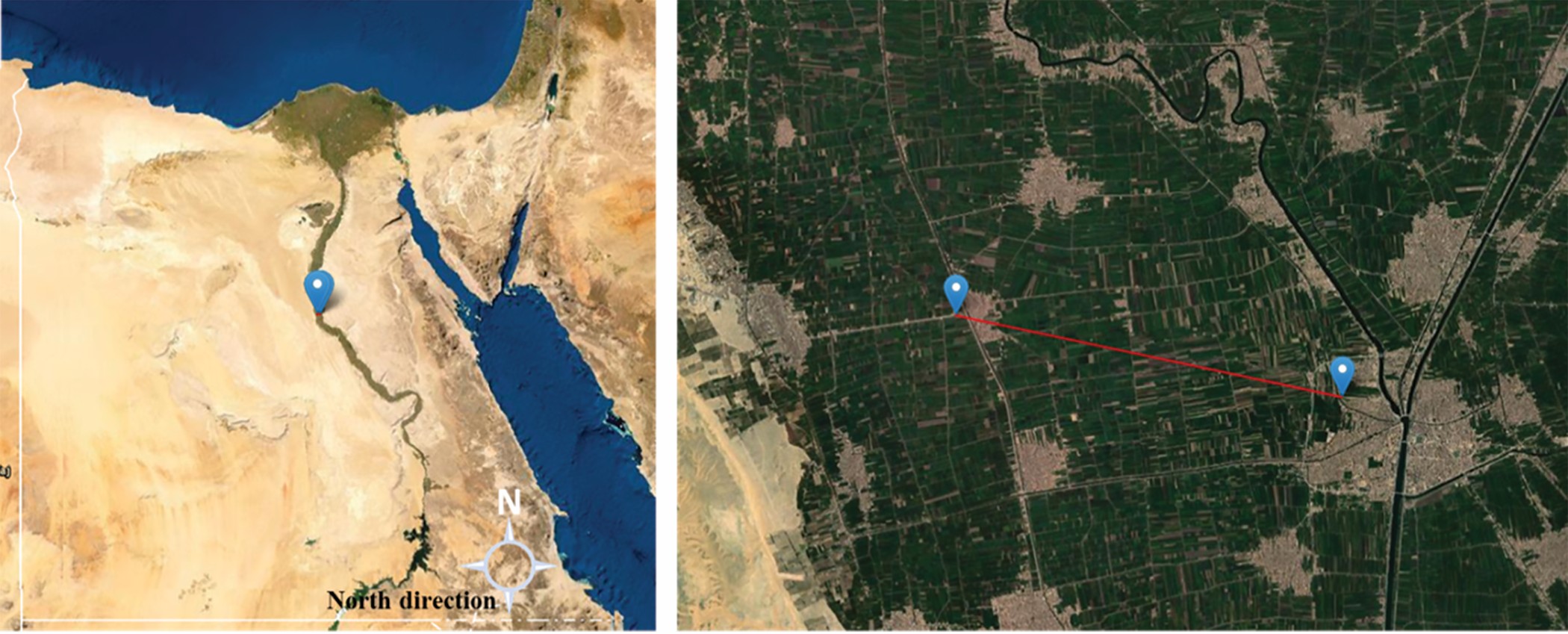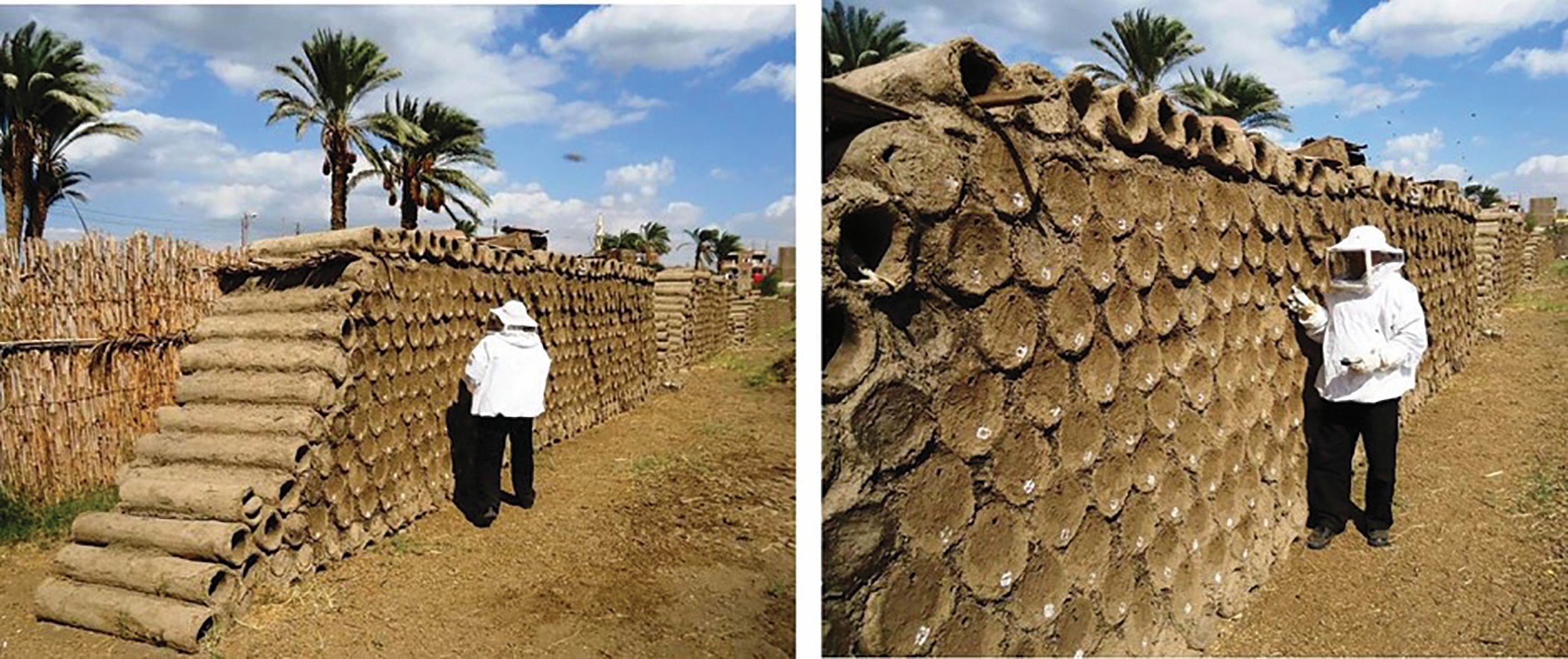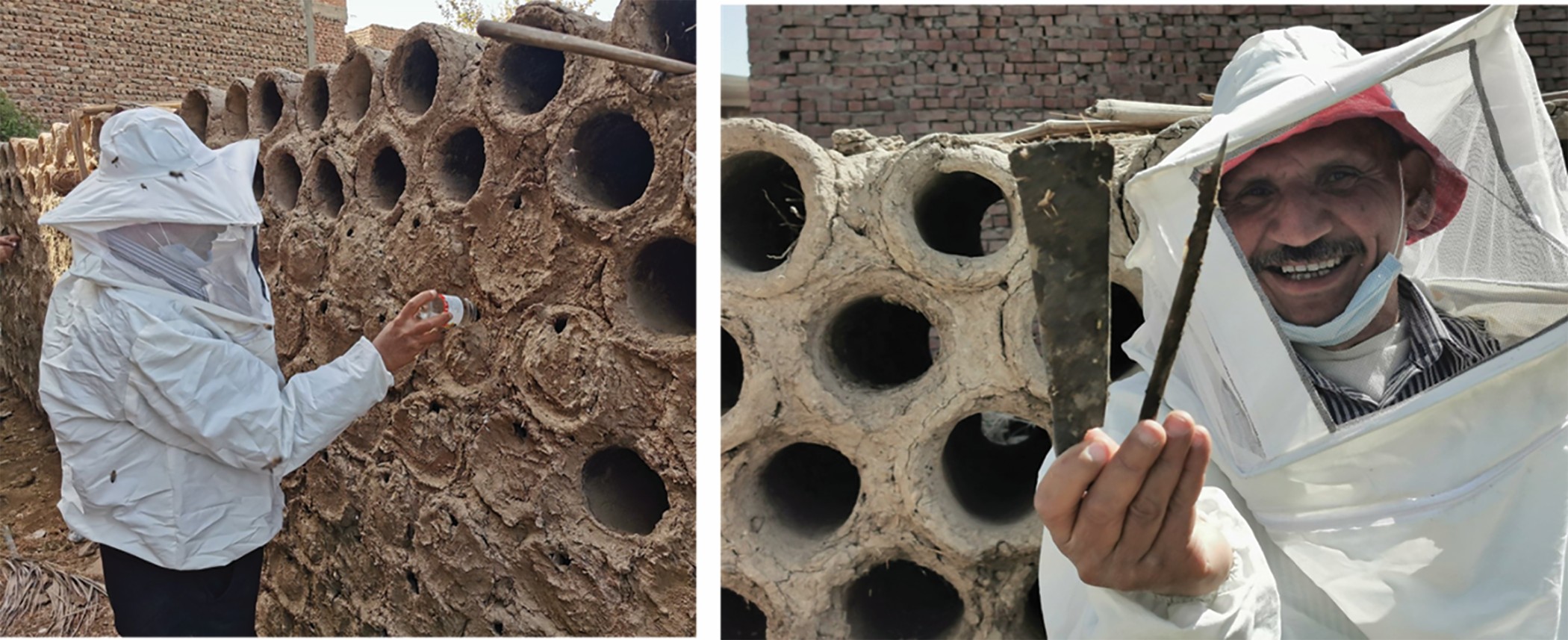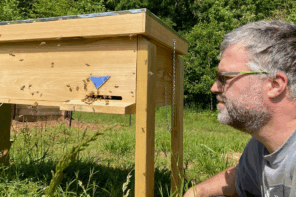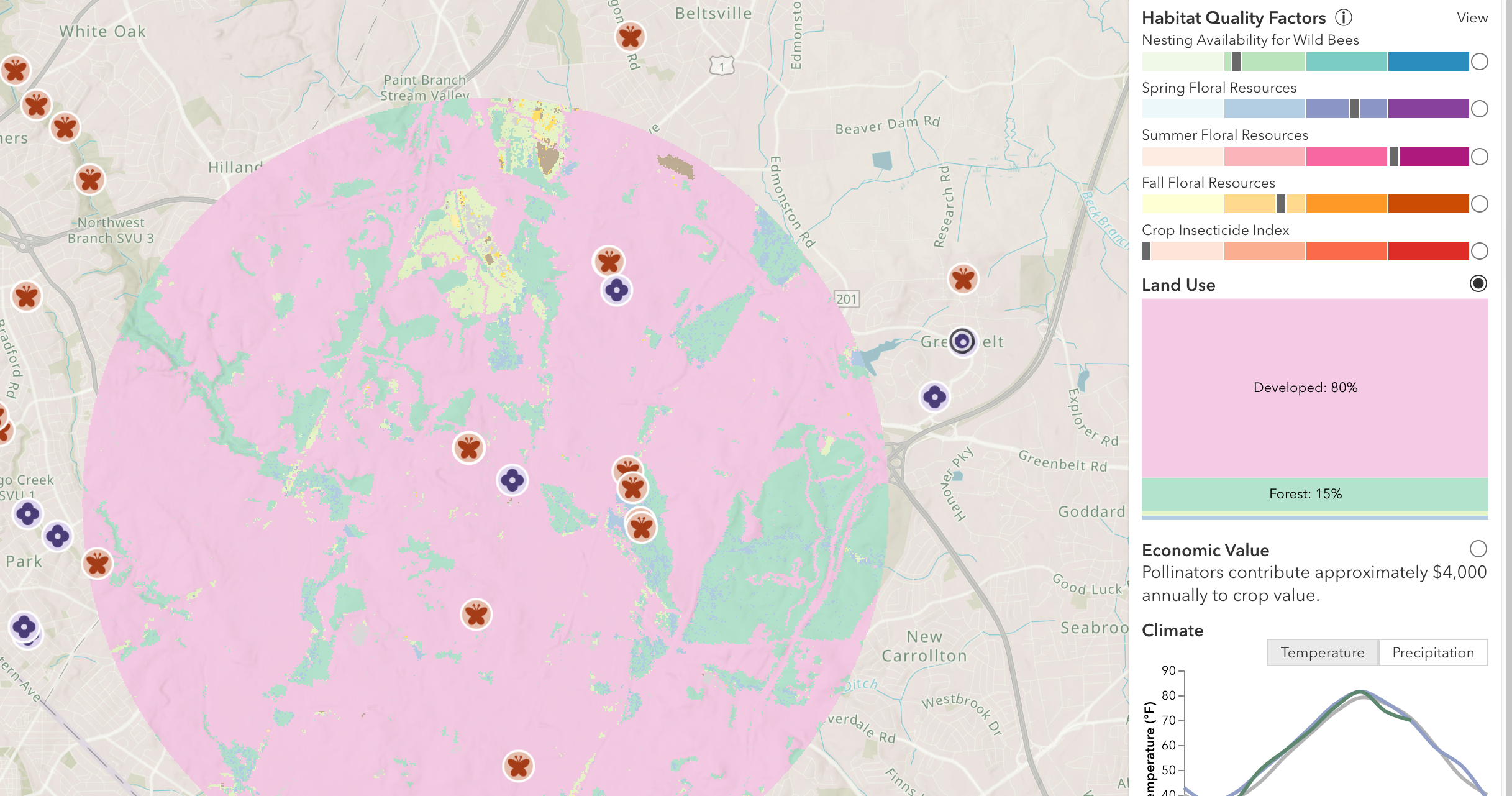Hossam Abou-Shaara1
Dahi Mohamed2
Beekeeping is an old practice in Egypt since the time of Pharaohs. The ancient Egyptians used mud hives to keep honey bees. Nowadays, modern Langstroth beehives are being used all over Egypt except a few locations in South Egypt where mud hives are still used. This article presents a close up with the mud hives (the historic beehives of the ancient Egyptian). It is well known that Egypt is among the oldest countries in beekeeping and the ancient Egyptians were able to keep bees to harvest honey, and they were able to perform migratory beekeeping across the Nile River. The majority of beekeepers saw drawings of the mud hives without getting a chance to see these hives in reality. Therefore, this article is interesting to increase the knowledge of beekeepers about ancient beekeeping in Egypt.
The mud beehives
The mud beehives exist in Asyut Governorate towards South Egypt. Approximately three locations only still have these beehives (Fig. 1). These locations are close to cultivated lands. The rest of the country has modern beekeeping using Langstroth beehives (beehives with movable frames).
The apiary contains hundreds of mud hives (Fig. 2). These beehives are arranged above each other in an organized manner. Each set of beehives can be up to 400 mud beehives. The mud beehives are fixed close to each other using mud (Fig. 3). The length of a mud hive is about 48” with diameter of 8”.
Each beehive is closed using a mud cover (Fig. 4). Each cover contains a small hole to allow entry. The honey is harvested from the back side of the hives.
Typically the bees build small wax combs inside the hives (Fig. 5), and store honey in the back combs. There are some tools which are used to remove the covers or to collect the honey from the beehives (Fig. 6). Bees are able to live inside these beehives all year without any problems during Winter/Summer seasons. In case of swarming, the bees can enter any empty tube to build their own new colony.
This article presents a glance of the oldest beehive types in the world (the mud hives). Without doubt, the current beehives with movable frames are better than such historic beehives. However, mud hives give a chance for beekeepers/students/researchers to follow the natural behaviors of bees without human interference. Also, locations containing mud hives are a good destination for apitourism in Egypt.
1Plant Protection Department, Faculty of Agriculture, Damanhour University, P.O. Box 22516, Damanhour, Egypt. email: hossam.farag@agr.dmu.edu.eg
2Department of Agricultural Technical Education Directorate, Ministry of Education Directorate of Education in Minia Governorate, Egypt.





